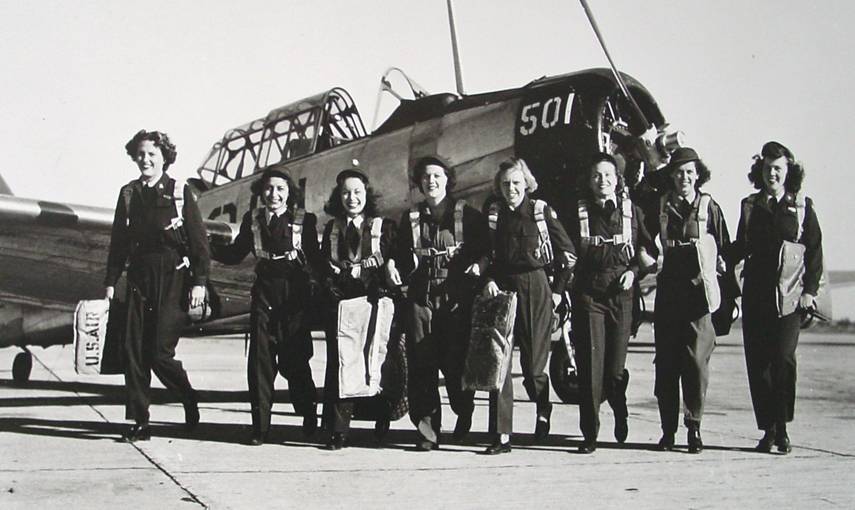





|
On a Wing and a Prayer by Lynn Bulmahn
|
|
Reprinted from the original November 2007 edition |

|
WACO ARMY AIR FIELD, 1944 (L TO R) Kay Elliot (Thompson), Mary Regalbuto (Jones), Lorraine Zilner (Rodgers), Anne Noggle, Clarice Siddal (Bergemann), Mary Jane Isham (Ehrman), Evelyn Taylor (Wahberg), Doris Boothe (Wanty) |